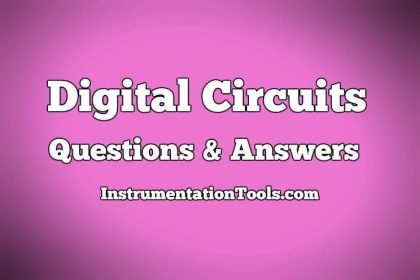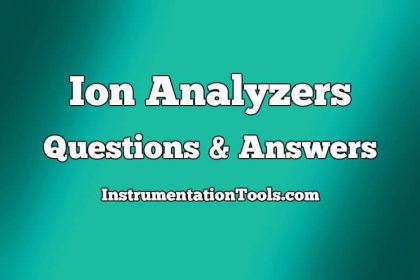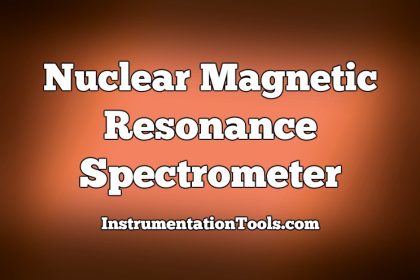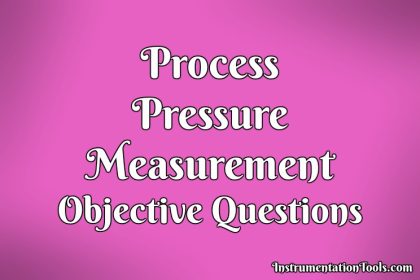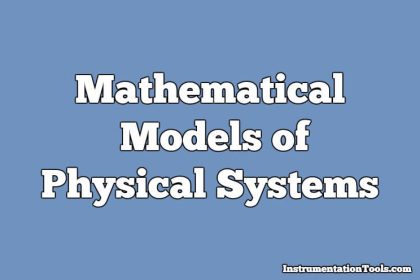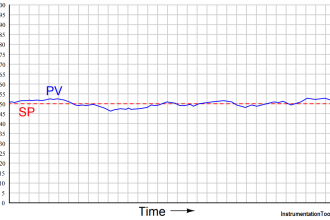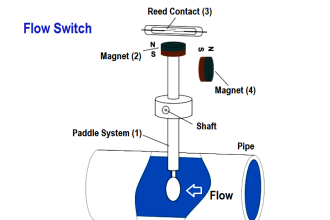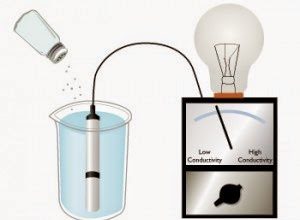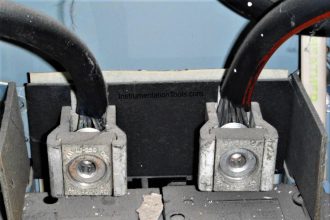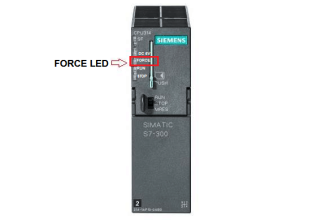Time Response of Second Order Systems – II
1. What will be the nature of time response if the roots of the characteristic equation are located on the s-plane imaginary axis?
a) Oscillations
b) Damped oscillations
c) No oscillations
d) Under damped oscillations
Answer: c
Explanation: complex conjugate (non-multiple): oscillatory (sustained oscillations)
Complex conjugate (multiple): unstable (growing oscillations).
2. Consider a system with transfer function G(s) = s+6/Ks2+s+6. Its damping ratio will be 0.5 when the values of k is:
a) 2/6
b) 3
c) 1/6
d) 6
Answer: c
Explanation: s+6/K[s2+s/K+6/K] Comparing with s2+2Gw+w2
w= √6/K
2Gw=1/K
2*0.5*√6/K =1/K
K=1/6.
3. The output in response to a unit step input for a particular continuous control system is c(t)= 1-e-t. What is the delay time Td?
a) 0.36
b) 0.18
c) 0.693
d) 0.289
Answer: c
Explanation: The output is given as a function of time. The final value of the output is limn->∞c(t)=1; . Hence Td (at 50% of the final value) is the solution of 0.5=1-e-Td, and is equal to ln 2 or 0.693 sec.
4. Which one of the following is the most likely reason for large overshoot in a control system?
a) High gain in a system
b) Presence of dead time delay in a system
c) High positive correcting torque
d) High retarding torque
Answer: c
Explanation: Large overshoot refers to the maximum peak in the response of the closed loop system and this is mainly due to the high positive correcting torque.
5. For the system 2/s+1, the approximate time taken for a step response to reach 98% of its final value is:
a) 1s
b) 2s
c) 4s
d) 8s
Answer: c
Explanation: C(s)/R(s) = 2/s+1
R(s) = 1/s (step input)
C(s) = 2/s(s+1)
c(t) = 2[1-e-t] 1.96 = 2[1-e-T] T= 4sec.
6. The unit step response of a second order system is = 1-e-5t-5te-5t . Consider the following statements:
1. The under damped natural frequency is 5 rad/s.
2. The damping ratio is 1.
3. The impulse response is 25te-5t.
Which of the statements given above are correct?
a) Only 1 and 2
b) Only 2 and 3
c) Only 1 and 3
d) 1,2 and 3
Answer: d
Explanation: C(s) = 1/s-1/s+5-5/(s+5)^2
C(s) = 25/s(s2+10s+25)
R(s) = 1/s
G(s) = 25/(s2+10s+25 )
w= √25
w = 5 rad/sec
G = 1.
7. The loop transfer function of controller Gc(s) is :
a) 1+0.1s/s
b) -1+0.1s/s
c) –s/s+1
d) s/s+1
Answer: a
Explanation: The transfer function of the controller is 0.1s+1/s
Gc(s) = 0.1s+1/s.
8. The peak percentage overshoot of the closed loop system is :
a) 5.0%
b) 10.0%
c) 16.3%
d) 1.63%
Answer: c
Explanation: C(s)/R(s) = 1/s2+s+1
C(s)/R(s) = w/ws2+2Gws+w2
Compare both the equations,
w = 1 rad/sec
2Gw = 1
Mp = 16.3 %
9. Consider a second order all-pole transfer function model, if the desired settling time(5%) is 0.60 sec and the desired damping ratio 0.707, where should the poles be located in s-plane?
a) -5+j4√2
b) -5+j5
c) -4+j5√2
d) -4+j7
Answer: b
Explanation: G = 1/√2
Gw = 5
s = -5+j5.
10. Which of the following quantities give a measure of the transient characteristics of a control system, when subjected to unit step excitation.
1. Maximum overshoot
2. Maximum undershoot
3. Overall gain
4. Delay time
5. Rise time
6. Fall time
a) 1,3 and 5
b) 2, 4 and 5
c) 2,4 and 6
d) 1,4 and 5
Answer: d
Explanation: Maximum overshoot, rise time and delay time are the major factor of the transient behaviour of the system and determines the transient characteristics.


